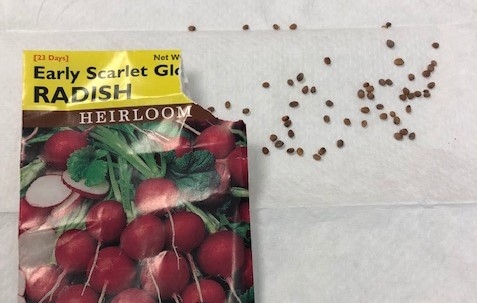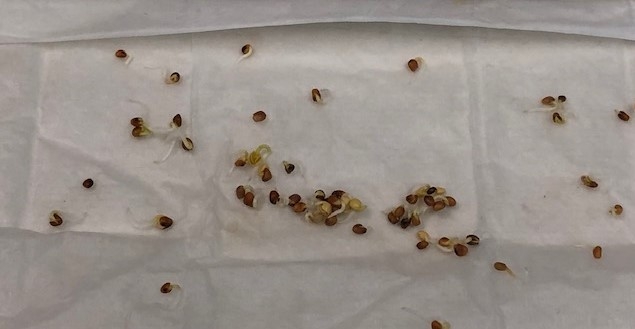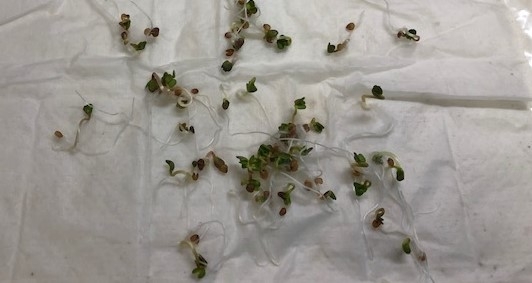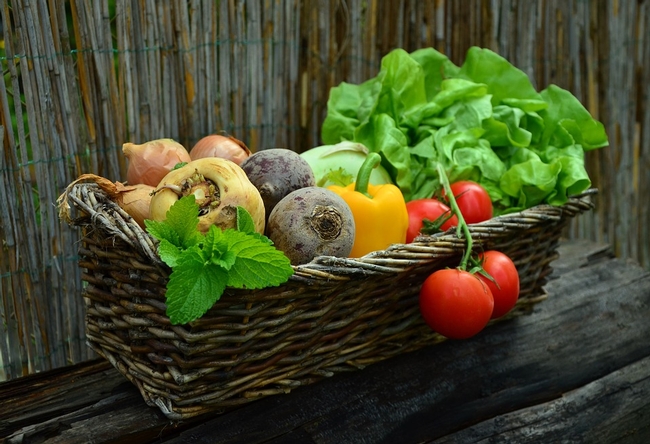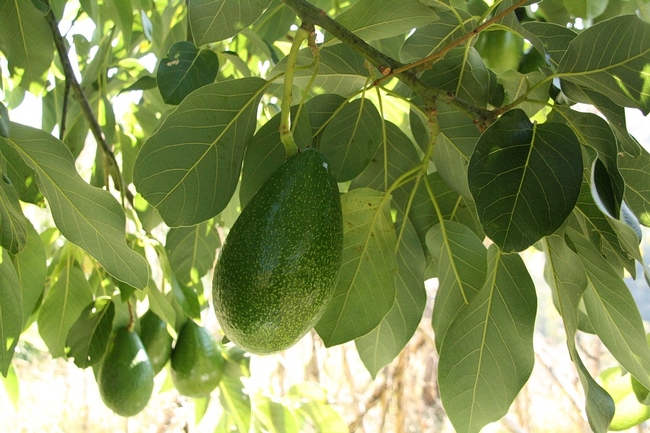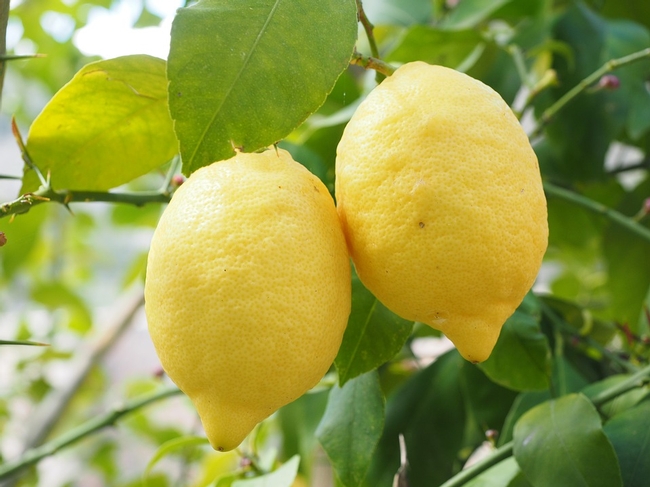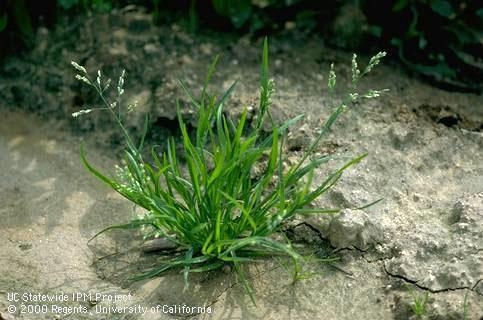- Author: Ed Perry
When planning your spring garden, one of the first decisions you must make is whether to use those seeds you saved from last year. Are they still as viable as they were when you purchased them, or will you be better off simply buying a new supply?
The answer depends upon the conditions under which the seeds were stored, as well as the length of storage. The two most important environmental conditions in seed storage are temperature and humidity. You should store all seeds under cool and dry conditions. An airtight, sealed jar placed in your refrigerator is a good way to do this. Stored in this way, many vegetable seeds will retain almost “first year” germination and vigor for several seasons. If you can't refrigerate your seed, at least keep it as dry and cool as possible.
The length of time seed is stored is not as critical as the conditions under which it is stored, but all seed deteriorates with time. Older seeds tend to require a longer time to germinate, and the seedlings do not grow as rapidly. Delayed germination and slow growth can cause young plants to be more susceptible to insect damage and seedling diseases. A delay in germination and growth can also delay maturity of the crop.
It's a good idea to test old seed before you plant. Place a few between moist paper towels and leave them at room temperature. Some seed normally takes longer to sprout than others, but if fewer than half of the seeds sprout or if they take an exceptionally long time, it's best not to use them.
Saving seed doesn't always save you money. In fact, it's more likely that losses due to poor germination and reduced vigor will more than offset any money you save by not buying fresh seed. However, buying new seed won't make up for poor planning. Even new seed will fail to sprout if it is planted at the wrong time of the year. If the seeds of warm season vegetable crops are planted before the soil warms up enough, they will often rot. For instance, the minimum soil temperature for seed germination of cucumber, cantaloupe, okra, pumpkin, squash and watermelon is 60ºF. However, at this temperature, the seed will not grow vigorously. A better soil temperature for those crops would be between 65ºF and 75ºF. Many summer vegetables require even higher soil temperatures for best germination and growth. For example, the optimum soil temperature for beans, eggplant, pepper, tomato and corn is 85ºF. As you can see, it doesn't pay to rush your planting.
Seeds need the proper amount of moisture and air in the soil to sprout. If the seeds dry out, even for a few hours, they will die. After you water, air enters the spaces between the soil particles as the excess water drains out of the soil. Since clay soils have less air space, seeds can suffocate if the soil is kept too wet. Mixing organic matter into the soil where you plant improves the soil's drainage and increases the amount of air in the soil. This will also help to prevent soil crusting, another reason seedlings often fail to appear.
Excess salts in the soil can burn tender plant roots. Soils with poor drainage may accumulate excess salts. Too heavy an application of fertilizer can also damage seedlings, so carefully follow the directions on commercial fertilizer products. If you use manures, mix them into the soil at least 4 weeks before planting and water heavily to wash out the excess salts they may contain.
Ed Perry is the emeritus Environmental Horticultural Advisor for University of California Cooperative Extension (UCCE) in Stanislaus County.
- Author: Anne E Schellman
On Thursday, February 7, the University of California Cooperative Extension (UCCE) Stanislaus County Master Gardeners held their very first class. The topic was spring vegetable gardening. UCCE Master Gardener Royce Rhoads discussed how to tell if your seeds are still “good,” what supplies are needed to start vegetable seeds indoors, and what vegetable seeds to plant outdoors.
We were excited to have 64 people attend our first event! Feedback from participants included:
- Thanks for the opportunity to attend and learn some basics.
- Appreciated the clear and concise information.
- This program is off to a great start and will be a real asset to our community!
If you couldn't make the class, you can download our free Vegetable Gardening Guide. It has step-by-step information on preparing garden beds, proper irrigation, dealing with pests and diseases, and a guide to which vegetable crops you can grow in our area and tips for growing them. You can also contact the UCCE Master Gardeners with your questions by calling (209) 525-6800 or sending an email to ucmgstanislaus@ucanr.edu.
Never miss a class! Stay in touch by subscribing to our newsletter blog, The Stanislaus Sprout. Look for the word "subscribe" on the top right-hand corner of the page. Add your name to receive gardening and pest management tips, as well as announcements for future classes and workshops.
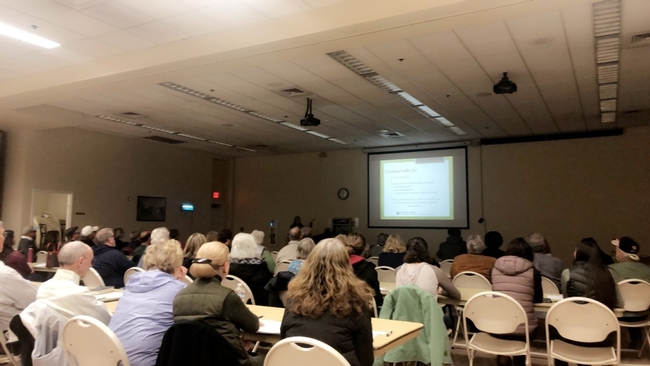
- Author: Ed Perry
We recently wrote the blog post “Wait! Don't Prune Apricot and Cherry Trees Just Yet,” to caution gardeners against pruning these trees in winter. Now we'd like to discuss when and how to prune avocado and citrus trees.
Avocados
Most avocado trees need little or no pruning. Whenever possible, allow them to develop naturally. Avocado leaves produce and store food for the tree. If this food supply is reduced by pruning, fruit production will also be reduced. Usually, removing dead or weak branches is the only pruning you need to do. Avoid pruning in late summer and early fall, as this stimulates new shoot growth that is susceptible to frost injury. In general, remove as few green branches and leaves as possible.
If you need to remove lower branches, prune them out completely, or cut them back to an upright growing shoot. Prune only after your tree has developed enough upper foliage to prevent sunburn damage on the lower limbs or trunk.
Sometimes a young tree grows tall without branching, grows sideways, or grows a top that is unbalanced. Correct these conditions by cutting the unruly limb or trunk back to a strong lower branch, or by staking the tree. Keep in mind that avocado trees grow naturally in an irregular way and will develop a better structure if they are not pruned at all. If you want to control the height, it's best to do so while the tree is young.
To prevent tall, upright growth, pinch back the terminal bud of the upright shoots on the young tree. Repeat this after each growth flush during the first few years. Your tree will spread out to the sides and develop a more compact form. If you reduce the size of an older tree by heading back large branches in the top of the tree, be sure to thin out the new growth which follows. Otherwise, the tree will soon grow back to its original height.
Citrus
If necessary, light pruning can be done in citrus trees any time of year. However, the best time to prune citrus is in early spring, after danger of frost has passed and before the start of spring growth.
Nearly the same rules for avocado trees apply to pruning citrus trees. The foliage of a citrus tree is an important food (carbohydrate) storage area. Pruning removes foliage and stored foods and causes the tree to produce a flush of vegetative growth instead of fruit. For the most part, prune out only dead or broken limbs.
Citrus trees normally produce vigorous shoots from the base of the tree called suckers, which you should remove as they grow. Vigorous shoots that grow from branches are called watersprouts. Remove watersprouts if they are not well placed but leave them whenever possible. Young trees need no pruning for the first two or three years after planting, except to remove suckers. As the tree grows older, prune lightly only to remove branches which are too closely spaced or entangled. Do not remove low-hanging branches, as they bear fruit within easy reach and shade the trunk and soil. The ideal citrus tree has a skirt of foliage that extends almost to the ground. Left alone, citrus trees normally develop an even, round-headed shape as they mature.
Lemons usually need a bit more pruning than other types of citrus. Cut back some of the more vigorous shoots on young trees. Lightly thin the branches of mature lemon trees each year to improve the size and quality of the fruit.
Ed Perry is the emeritus Environmental Horticultural Advisor for University of California Cooperative Extension (UCCE) in Stanislaus County.
- Author: Anne E Schellman
Weeds may grow more slowly this time of year, but they can still be a problem. Most of the weeds found in gardens and landscapes now are winter annuals. These weeds germinate in late summer or fall and grow during cool weather.
Annual weeds flower and set seed in spring and die in summer. Some of these weeds can produce hundreds to thousands of seeds per plant! As you may imagine, these weeds can quickly become difficult to control once established. The best time to control weeds is when they are small, before they bloom and set seed.
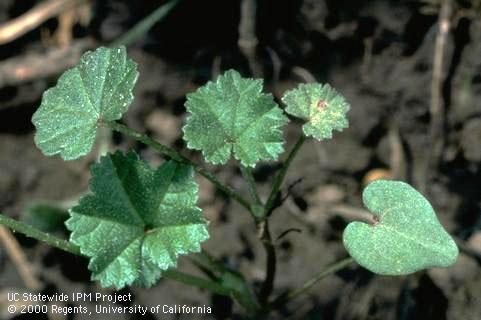
Manage annual winter weeds by hand pulling or hoeing, making sure you remove the entire root. Once you've cleared an area, apply 3-5 inches of mulch. Monitor your landscape weekly, pulling any weeds that emerge. Be aware that organic mulches break down and must be replaced every few years.
Young weeds in open areas can be killed using a small flaming tool. You can find these at local hardware stores or nurseries. In difficult cases where you have trouble getting control, you may want to use an herbicide. Be sure to identify your weeds before choosing a product. Read the label before application and follow directions carefully.
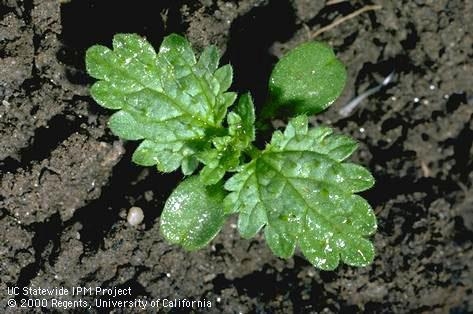
If you aren't sure what weeds you have in your garden, you can bring in samples to the Stanislaus UCCE Master Gardeners. Reach us at (209) 525-6800 or visit our office between 8:00 a.m. and 4:30 p.m. Monday through Friday, at the Agricultural Center on 3800 Cornucopia Way, Ste A in Modesto, 95358. You can also email photos to ucmgstanislaus@ucanr.edu.
For more details on weed control, consult the following UC IPM Pest Notes: Weed Management in Landscapes and Weed Management in Lawns. 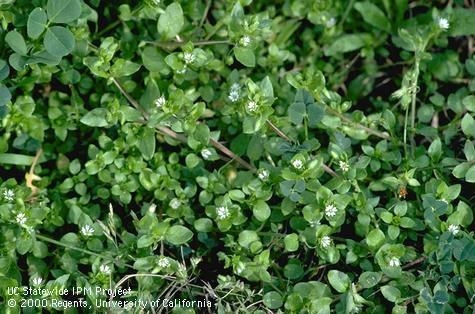
- Author: Anne E Schellman
Pests need food, water, and shelter to live. Unfortunately, some of us unknowingly attract and even invite pests to live in and around our homes!
Insect and animal pests can pass through small spaces. For example, mice can get through a hole the width of a pencil, and cockroaches can flatten themselves and squeeze through cracks. Here are some circumstances that attract pests, allow them access, and provide them with food, water, and shelter:
Pest Attractors and Supporters
- Pet food and water bowls (indoors and outside)
- Bird feeders
- Leaking water spigots
- Open food packages in your kitchen
- Hedges and shrubs near doors or windows
Entry Points
- Holes in windows and screen doors
- Cracks in the foundation of your house
- Holes in the roof or attic
- Crevices around pipes indoors (bathrooms, laundry area, kitchens) and outside
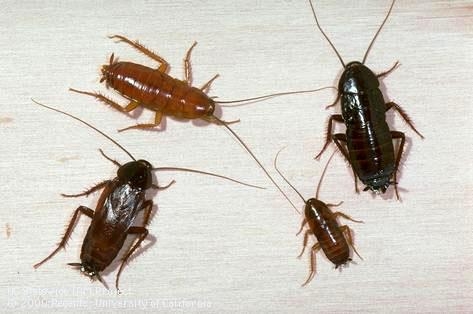
Use IPM to Manage Pests
Use integrated pest management or IPM to help you pest proof your home. First, walk in and around your home to inspect for the above pest attractors, supporters, and entry points. Once you find a pest, for help with identification contact the UCCE Master Gardeners of Stanislaus County at (209) 525-6800.
If you can't personally inspect your home or don't have time, you can call a pest control company and ask them to do it for you. This is helpful for hard to access places like basements and attics.
For Quick Tips on common pests and their management and prevention from the UC IPM website, click below.
Other Helpful Links
What is IPM?
UC IPM Website
Pest Notes Library
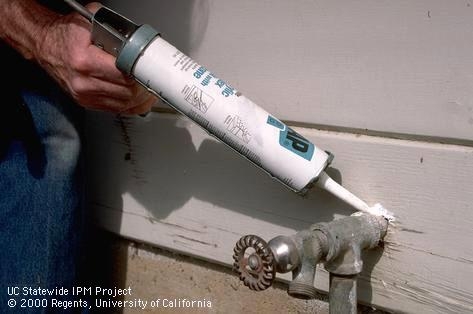
Stay in touch! Follow us on Facebook or Twitter @UCMGStanislaus

